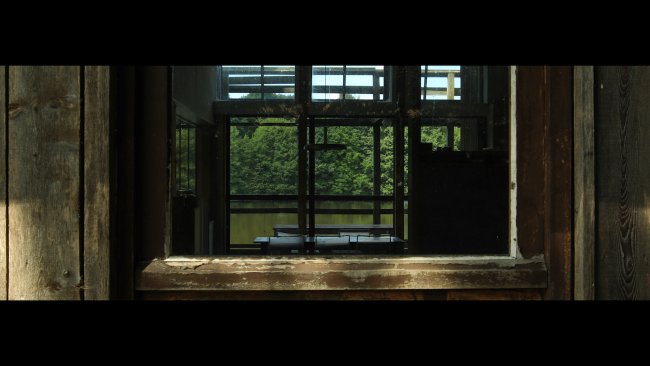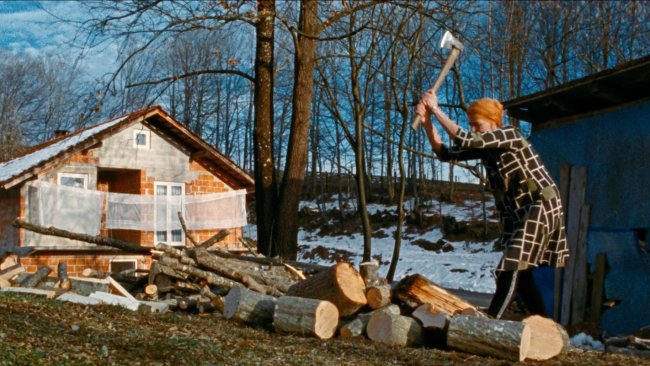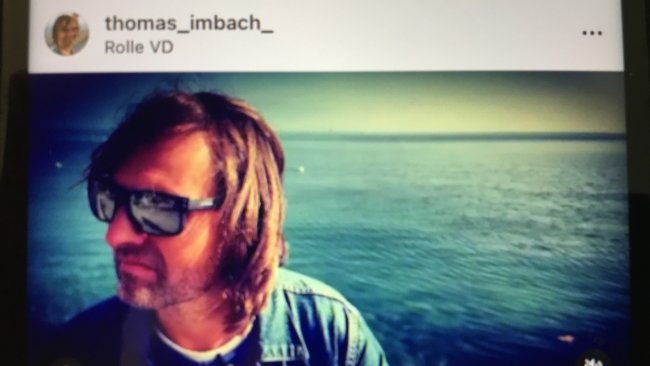Thomas Heise | Heimat ist ein Raum aus Zeit
[…] The accurate selection of the archive material aims to reveal the vibrancy of life (humour included) and the oppression of History. The dialectic between the personal and the historical is the central focus of Heise’s inquiry into the story of his family
[…] We once again discover the importance of cinematography: the recurrent theme of the freight trains, the absence of persons, and the homogeneity of the (slow) speed of any movements on the screen (the movement of the trains or the movement of the camera) convey a sense of inevitability that seems to physically embody the slow and gigantic movement of History as smugly disdaining the destinies of individuals.
[…] Thanks to this long and vivid cinematic journey through history, we realize with rare clarity how much the violence of war has been a thread that comes to our times without interruption, and is still the more appropriate perspective by which to read the present, even in (the current, apparently peaceful) Europe.
Text: Giuseppe Di Salvatore | Audio/Video: Ruth Baettig
218 minutes of film, following a family saga and a piece of German and Austrian history... but we are far from the literary flavour of Joseph Roth’s Trotta family, or Thomas Mann’s Buddenbrook family, for the 19th century histories of houses are replaced here with the 20th century history of displacements: the threatened unity is replaced with fragmentation; the literary discourse is replaced with intimate (but no less literary) letters. These letters are the principal thread of Heimat ist ein Raum aus Zeit (Heimat Is a Space in Time), where the personal address tries to resist separation and distance, and to resist – or just exist, as a trace – after the incumbent death (one can see how mindful Walter Benjamin’s consideration has been in order to interpret the 20th century). The letters create a fictional space, a space of the spirit, which is meant to touch the other, the distant, and at the same time speaks of this distance, giving it meaning. The letters try to fill the absurdity and injustice of enforced separation with meaning.
War and the hatred of ethnic and political divides are the centrifugal force that the literary world of the letters opposes. Heise could not choose a more appropriate scenario to speak not only of his family but also of the 20th century as such. This is a perfect cinematographic scenario, insofar as through war and letters we find the two main ingredients of which – they say – cinema is done: crime and love. In this respect, a perfect demonstration of Heise’s cinematographic intelligence is the long sequence with the lists of Viennese Jews to be deported (in Second World War), scrolled through at a slow pace, while we hear the letters that the family members are exchanging in the days before the set date of deportation. We repeatedly see this date, and follow the alphabetic order, which slowly approaches the “h” for Hirschhorn, while hearing the letters of the Hirschhorns that do not know the date of deportation, and do not even imagine what this deportation will mean for them. This is a filmic procedure – three times reiterated! – that is worthy of exemplifying the most Hitchcockian definition of suspense, concurrently documenting the bitter story, and the absurd History of the Holocaust.
Heimat ist ein Raum aus Zeit is, literally, a documentary, and a literary documentary, being as it is entirely constructed around archive documents, but through the wonderfully spoken reading out of the letters (by Thomas Heise himself), we are far from the fashionable use of archive images in recent documentary films, which often amounts to nothing but a forced reanimation of dead material. There is no trace of nostalgia in Heise’s look at the past, and the accurate selection of the archive material aims to reveal the vibrancy of life (humour included) and the oppression of History. The dialectic between the personal and the historical is the central focus of Heise’s inquiry into the story of his family – and the curiosity for the privacy that could sometime arise in the viewer is systematically deceived. In this respect, we once again discover the importance of cinematography: the recurrent theme of the freight trains, the absence of persons, and the homogeneity of the (slow) speed of any movements on the screen (the movement of the trains or the movement of the camera) convey a sense of inevitability that seems to physically embody the slow and gigantic movement of History as smugly disdaining the destinies of individuals. To complete this perception of the blind inevitability of History, the soundscape – natural or mechanic – is always designed to contrast, with its insensitivity to human variations, the personal layer, which remains contained within the space and time of the voice.
This cinematographic dialectic between the personal and the historical is able to touch upon one fundamental topic of the film, which is the nature of the violence of which human beings – most often as a collective – are capable. If one of the first letters, written in 1912 by Heise’s paternal grandfather, refers to the bestiality of men, the main tragedies voiced in the film speak of a violence that is fuelled principally by ideology. When idiocy replaces bestiality as the inner enemy of humanity, then the intellectual disputes that go through the history of Heise’s family assume a stronger value. Therefore, Udo’s cynical and joyful defeatism, Wolfgang’s resistance to communist dogmatism, Rosie’s critical perspective on the GDR past, or the discussions with Heiner Müller on Bertolt Brecht – just to name few examples – are definitely more than accidental anecdotes; they are the ultimate attempt to resist the barbarity of ideology and idiocy.
After the break-up of the GDR, the camera will start to move as if confused, and the political reflections will take on more blurred contours. Yet, for a person like me who was born in the late Seventies, the sequences referring to the most recent years are of striking effectiveness: thanks to this long and vivid cinematic journey through history, we realize with rare clarity how much the violence of war has been a thread that comes to our times without interruption, and is still the more appropriate perspective by which to read the present, even in (the current, apparently peaceful) Europe. This is probably the most urgent reflection that results from that perfectly staged dialectic of the personal and the historical.
Heimat ist ein Raum aus Zeit is certainly a space and a time for reflections, but under the broader layer of the historical and philosophical reflections, a river of names still flows, sometime with the confidence of affection, sometime with the agitation of passion. We hear those names a hundred times during the film, yet they seem to never satisfy the longing of which the letters are made. Heise’s last film is not only a magnificent meditation on a large piece of history; it is also a personal tribute to his family, or the expression of his personal and intellectual legacy. In a way, it is a polyphonic autobiography. And, again, the historical and the personal cannot but reveal themselves as being intimately connected: for the history of the century of bombs – of fragmentation, separation, migration – calls for the stories of bonds – of solidarity, of legacy.
This article contains a third-party video. If you would like to watch the video, please adjust your settings.
Info
Heimat ist ein Raum aus Zeit | Film | Thomas Heise | DE-AT 2019 | 218’ | Visions du Réel Nyon 2019
Sesterce d’or Visions du Réel Nyon 2019
First published: April 20, 2019








